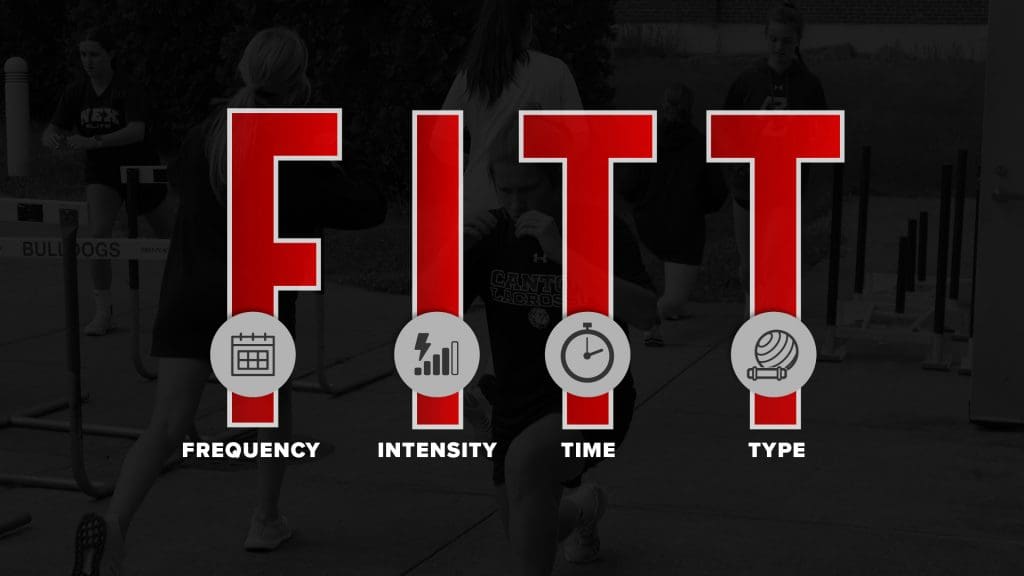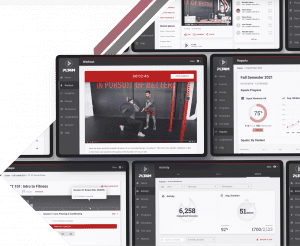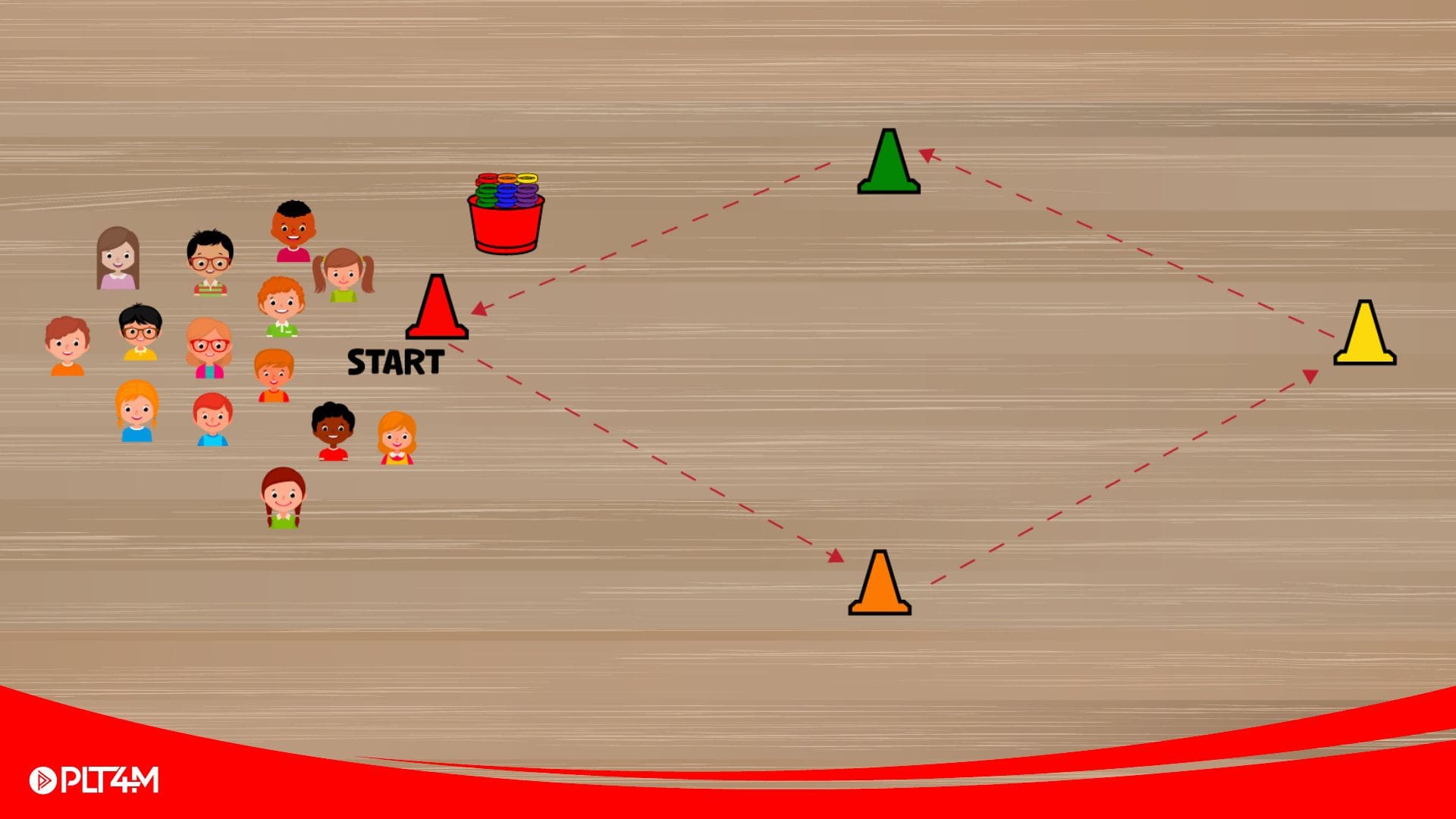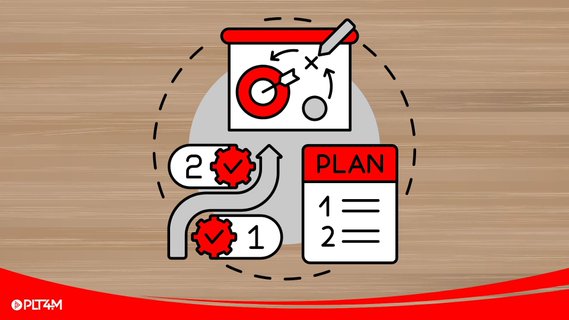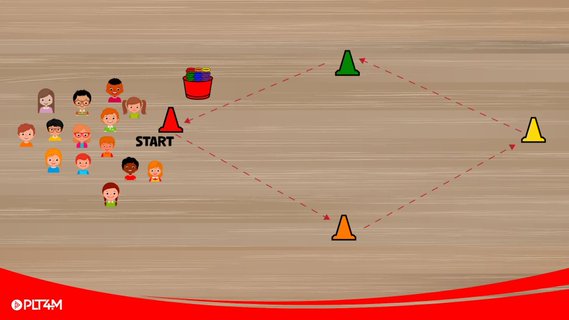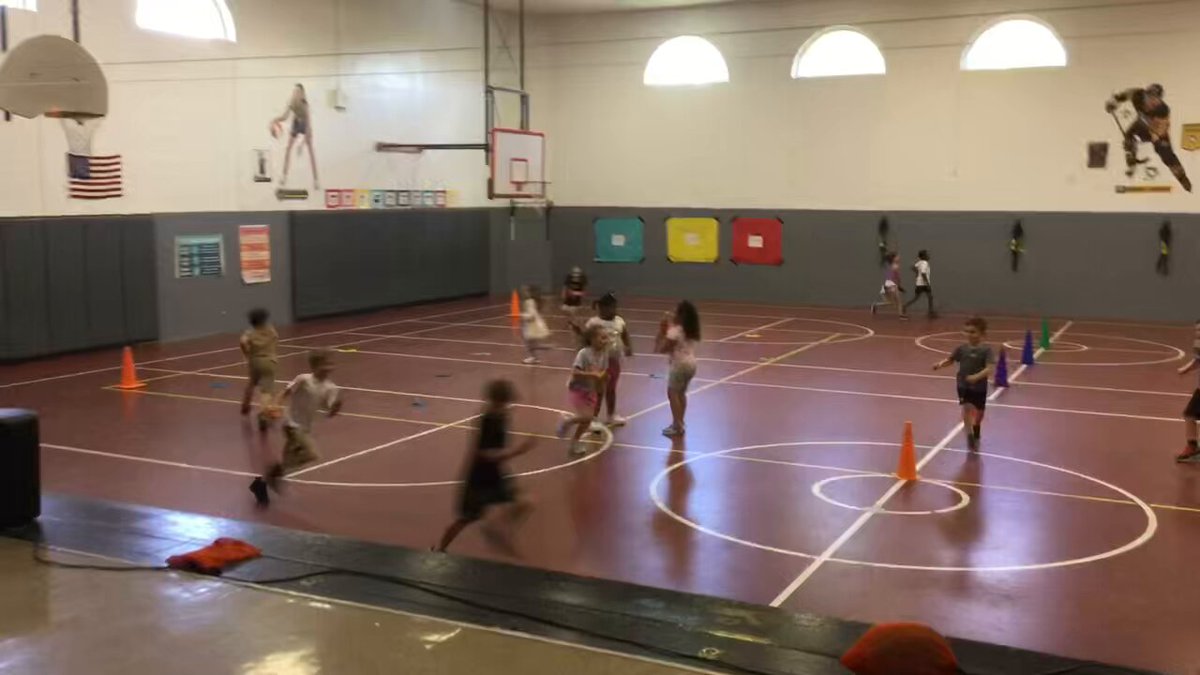As physical education looks to promote student engagement and lifelong fitness, the FITT principle serves as a valuable tool for the classroom. We explore the FITT principle, its benefits, and 3 different ways to apply it to physical education classes.
What Is The FITT Principle?
The FITT principle is a fun acronym that helps everyone, from students to personal trainers, understand and evaluate workout programs.
F – Frequency – how often will you exercise?
I – Intensity – how hard do you work during your exercise?
T – Time – how long do you exercise during each session?
T – Type of exercise – what types of workouts will be a part of your workout program?
Examples of the FITT Principle
Using the FITT principle, an individual can map a workout plan. For example, Sarah wants to run a 5K. Without FITT, Sarah might just go for occasional runs without a plan. But with FITT, she maps out a plan to balance longer, low intensity runs with shorter, high intensity runs. And because Sarah enjoys resistance training, she also plans to lift free weights twice a week as part of her training. Using the FITT principle, Sarah can map out her frequency, intensity, time, and types of exercise to prepare her for her 5K while still weight lifting.
Let’s look at another example. Kevin is a high school football coach planning the summer training schedule for his entire group of high school athletes. Kevin knows that he needs to prepare his athletes for the various demands of the high school football season. Using the FITT principle, he maps out a 5-day training schedule focusing on weight lifting 3 days a week and includes speed, agility, and conditioning for the other 2 days. With a high-level plan, Kevin can find a program that will achieve his different goals.
Benefits of The FITT Principle For Physical Education
The FITT principle is an important concept in physical education, as it provides a framework for effective exercise programs. But it is important to note the FITT principle doesn’t mean students have to jump right to creating their own workout plans. Instead, they can use FITT to start labeling and understanding the different types of workouts they are doing.
This can be especially helpful for students who often look for the context and the “why” behind the physical education experience. By using the FITT formula, students can have ownership in their physical activity and become more engaged with fitness.
In addition, the FITT principle can be applied to any fitness level. When students first start out, they can be tempted to compare to their peers. But FITT allows students to create fitness goals (see more on SMART Goals here) relative to their current fitness level.
And as students progress through physical education, they will, in time, be able to take small steps to create their own training sessions or workout plans with the help of the FITT principle. Again, this doesn’t have to happen immediately, but FITT provides an excellent foundation for success.
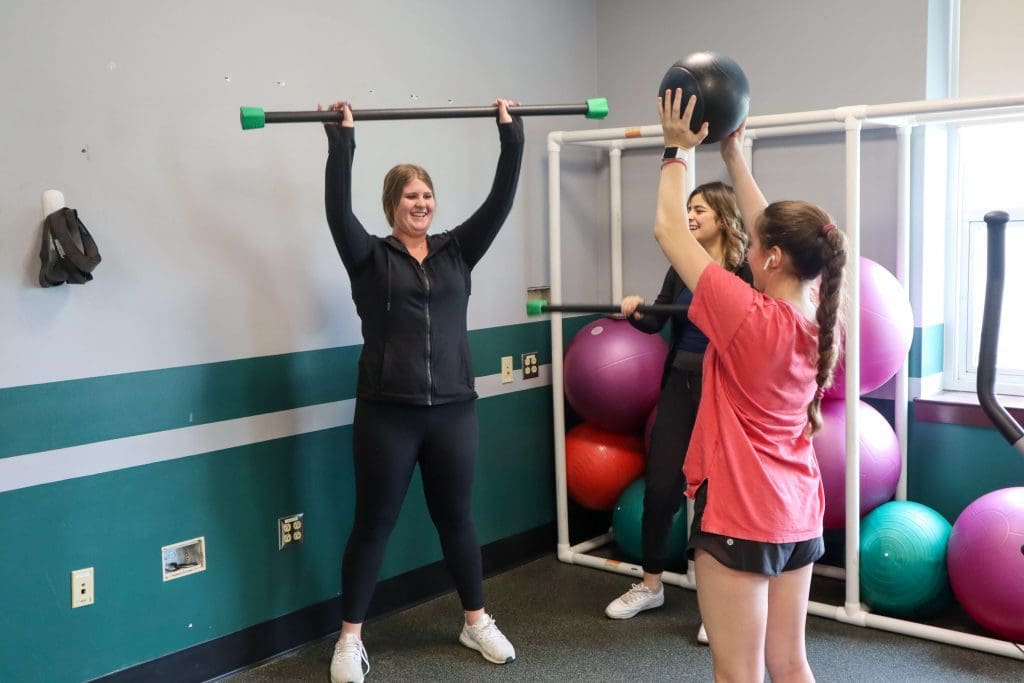
3 Steps To Utilizing the FITT Principle in PE
Physical education can implement the FITT principle in a variety of ways. Remember, most students have never stepped into a fitness center, let alone thought about exercise prescription. Start small and build students’ confidence before expecting them to create and craft their own training program.
Get 12 Free Lessons!
Proven strategies to introduce more Lifetime Fitness into your Curriculum. Loaded with free lessons, you won’t want to miss this resource!
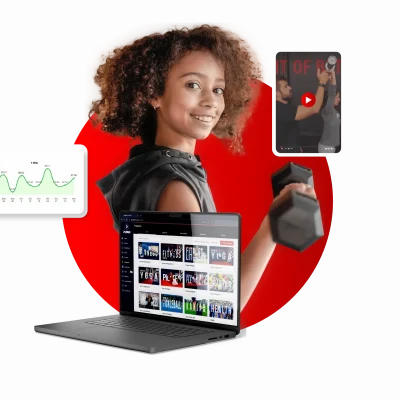
Step 1: Students Label Workouts
Before giving students the keys to exercise prescription and workout planning, a great first step is having students label workouts using the FITT principle. In this model, the teacher is in complete control of program and workout design. For example, a physical education class meets 5 days a week and has the following schedule:
Monday – Strength Training
Tuesday – Speed, Agility, and Conditioning
Wednesday – Strength Training
Thursday – Yoga / Recovery Day
Friday – Fun Friday (Boxing, Bootcamp, Dance, Games, Etc)
From here, students can identify and label the different training sessions using FITT (frequency, intensity, time, and type of exercise). Students can do this at a macro level (day by day) or micro level and explore what they did within each training session. You can also provide guiding questions that help students, like:
Was our Monday strength training day low intensity or high intensity? Or a mix of both?
Was our Tuesday session focused on cardiovascular activity or muscular strength?
Describe what you did for physical activity on Friday using the FITT principle.
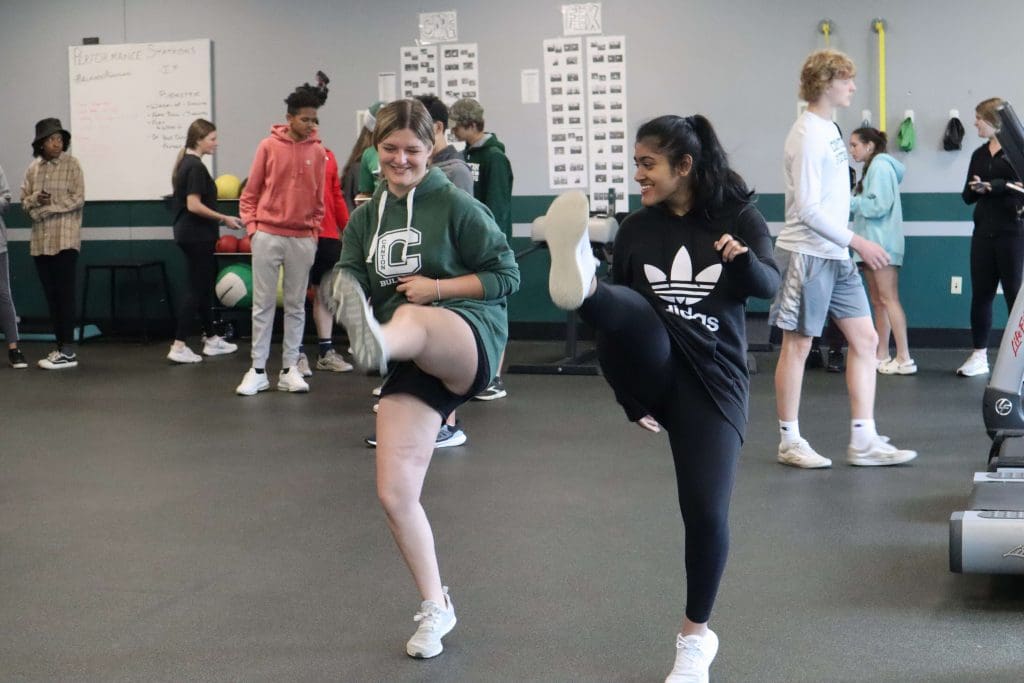
Step 2: Giving Students (Some) Choice
Once students start to understand the FITT principle, they can begin to have some choice and ownership in the types of training sessions they do throughout their fitness plan. While they might not get to choose the frequency or time because school schedules dictate that, they can start to have some autonomy in the exercise intensity and type of exercise.
For example, a physical education class might meet 3 days a week for 30 minutes a day. Students can use the FITT formula to decide what activities to put into their workout plan for the 3 days they come to physical education class.
Again, this doesn’t have to be a complete free for all. For example, physical education teachers using PLT4M can open up different workout programs for students to choose from in the same class. By doing so, students have choices but with a layer of structure.
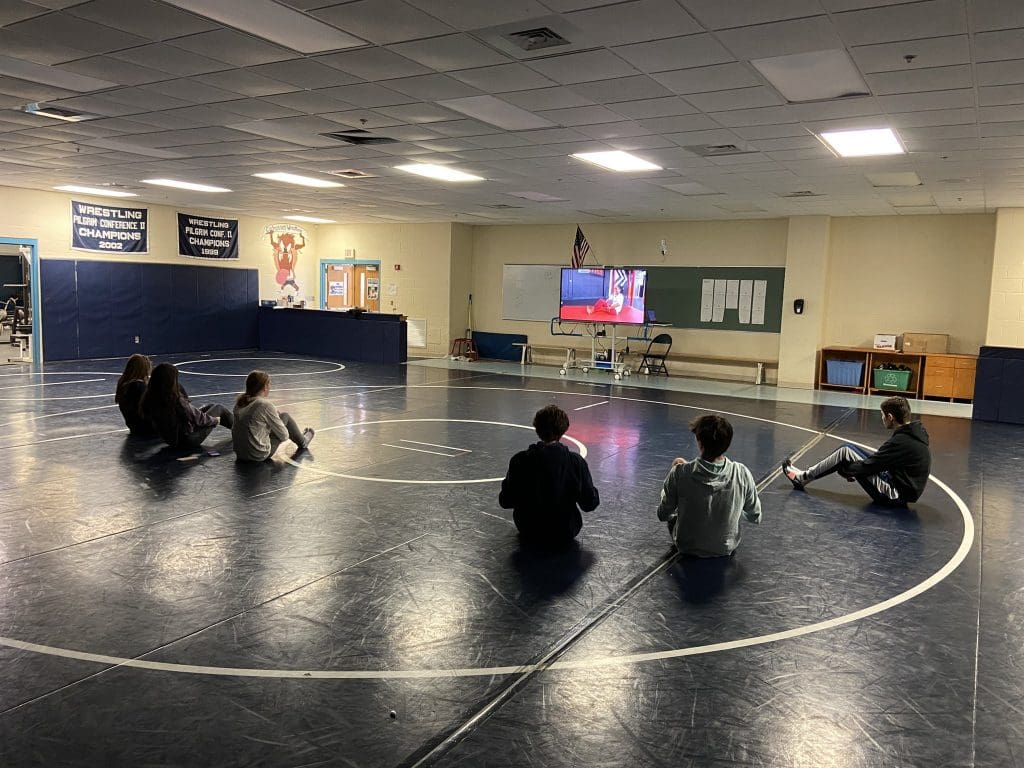
Ready to Learn More?
Schedule a free 10 minute consultation to see how PLT4M can help save you time and empower student learning!
Step 3: Create a Class Project Or Assignment
As students learn more about the FITT principle in physical education, they can start to design their own workout programs. For example, the assignment could state,
“You are tasked to create a personal fitness plan comprising 150 minutes of physical activity. Use the FITT principle to create a 2-week exercise program incorporating resistance training, aerobic exercise, and rest days.”
From here, students can pull from what they have learned in past physical education classes and begin to design a training program. For example, at Lewiston High School in Idaho, the advanced physical education classes take PLT4M videos and use a google spreadsheet to create a training program as a final project.
Bonus Content! Check out Christi Meyer and Jessica Shawley explain the student workout project at Lewiston High School.
This webinar is also hosted on our professional development course offering. Want to watch the whole webinar? Sign up below and receive an hour certificate of completion for your continuing education requirements.
Key Takeaways on Using The FITT Principle in Physical Education
The FITT principle (frequency, intensity, time, and type of exercise) can help contextualize and deepen students’ understanding of fitness and exercise. As a result, students can create a lasting positive connection with fitness to pursue long-term health and wellness. By using FITT, teachers can equip students with vocabulary of different exercise and training terminology.
And remember, just because you use the FITT principle doesn’t mean students must create and design semester-long workout programs. Even adults look to trained and certified professionals to help do this. But instead, the FITT principle should be seen as a valuable tool to help students put fitness into context and help plan at a HIGH level what they should be doing for physical activity on a regular basis.
FAQ
Does PLT4M Have Workouts and Lesson Plans?
Yes, PLT4M has hundreds of PE lesson plans and workouts. Within PLT4M, students can explore different units and topics like fitness, yoga, dance, boxing, strength training, pilates, nutrition, and more. These units and topics can be utilized for high school pe lesson plans and middle school pe lesson plans.
Is PLT4M standard aligned?
Yes, PLT4M helps align to all shape standards. Shape America is the leader in physical education standards and PLT4M’s programs and technology help to achieve standard alignment.
Does PLT4M provide professional development training for using technology in physical education?
Yes, PLT4M offers professional development to physical education teachers. PLT4M does this both through on-demand online courses and one-on-one consultations.
What type of schools utilize PLT4M?
Every type of school you can imagine! From rural, suburban to urban schools. Public, private or charter schools. Big, medium, or small schools. PLT4M is utilized in over 1,000 schools across the country.
